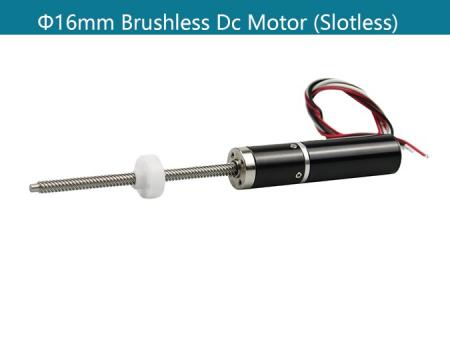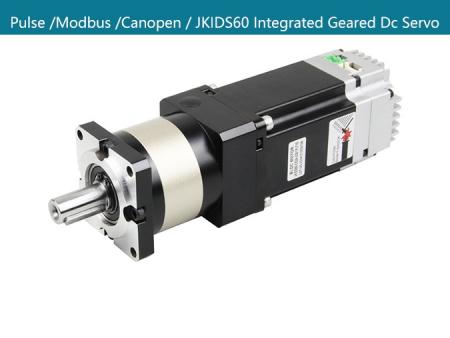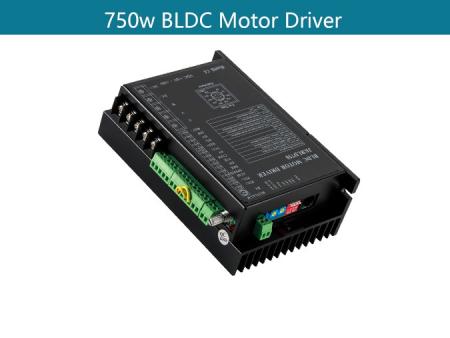A DC (Direct Current) motor is a type of electrical machine that converts electrical energy into mechanical energy through the interaction of magnetic fields. It operates on the principle of Lorentz force, where a current-carrying conductor placed in a magnetic field experiences a force perpendicular to both the current direction and the magnetic field lines. This force causes the conductor, in this case, the motor's armature or rotor, to rotate, thereby producing mechanical motion.
DC motors are widely used in various applications due to their simplicity, controllability, and efficiency. They can be found in appliances, industrial machinery, automotive systems, robotics, and more. Depending on the design, DC motors can be classified into brushed and brushless types. Brushed DC motors use brushes and a commutator to switch the direction of current in the rotor windings, while brushless DC motors achieve commutation electronically, offering advantages such as higher efficiency and reduced maintenance.
 |  |  |  |  |
| 24v 36v regular / or customized | 24V 36V / or customized | 24V 36V / or customized | 48V / or Customized | 48V / or Customized |
| Gearbox / Brake / Encoder / Driver / Shaft Customized | Gearbox / Brake / Encoder / Integrated Driver / Shaft Customized | Gearbox / Brake / Encoder / Integrated Driver / Shaft / Fan Customized | ||
| 42mm Round Brushless Dc Motor | 42mm Square Brushless Dc Motor | 57mm Brushless Dc Motor | 60mm Brushless Dc Motor | 80mm Brushless Dc Motor |
| / | IDS42 Integrated Servo Motor | IDS57 Integrated Servo Motor | IDS60 Integrated Servo Motor | IDS80 Integrated Servo Motor |
 |  |  |  |  |
| 48V / or Customized | 310V / or Customized | Coreless Dc Motors | IDS Integrated Servo Motors | Brushless Dc Motor Driver |
| 86mm Brushless Dc Motor | 110mm Brushless Dc Motor | |||
| / | / | |||
Brushed DC motors are the most traditional form of DC motors. They consist of a rotating armature, permanent or electromagnets, and brushes that conduct electricity to the motor windings. Here’s a closer look at their features:
The brushed DC motors operates on the principle of electromagnetic induction. The brushes and commutator facilitate the current flow to the armature windings, generating a torque that rotates the armature.
They are cost-effective, have a simple design, and are easy to control.
They suffer from wear and tear due to friction between the brushes and commutator, requiring regular maintenance.
Commonly used in household appliances, toys, and automotive applications like starter motors and windshield wipers.
brushless DC motors are an advanced alternative to brushed motors, eliminating the need for brushes and commutators. They utilize electronic control systems to manage the current flow.
Bldc motors consist of a stator with windings and a rotor with permanent magnets. Electronic controllers manage the current flow, improving efficiency and reducing maintenance needs.
High efficiency, long lifespan, and low maintenance due to the absence of brushes. They also offer better speed-torque characteristics.
More complex and expensive due to the need for electronic controllers.
Widely used in computer hard drives, CD/DVD players, electric vehicles, and high-performance RC models.
Permanent Magnet DC motors employ permanent magnets to create the magnetic field instead of windings on the stator.
The use of permanent magnets reduces the complexity and size of the motor. The armature rotates in the magnetic field created by the permanent magnets.
Simplicity in design, lower cost, and better performance in smaller sizes.
Limited to low power applications and temperature sensitivity of the permanent magnets.
Ideal for low-power applications such as electric toothbrushes, small fans, and portable power tools.
Series DC motors have the field windings connected in series with the armature windings, leading to certain unique characteristics.
The series configuration ensures that the same current flows through both the field and armature windings, producing high torque at low speeds.
High starting torque and the ability to handle variable loads.
Poor speed regulation under varying loads and the risk of running away (excessive speed) if operated with no load.
Used in applications requiring high starting torque like cranes, hoists, and electric locomotives.
Shunt DC motors feature parallel connection of the field windings and armature windings, allowing independent control of the magnetic field.
The parallel configuration enables better speed regulation, as the magnetic field strength remains relatively constant.
Good speed regulation and efficiency.
Lower starting torque compared to series motors.
Suitable for applications requiring steady speed, such as conveyor belts and machine tools.
Compound DC motors combine the characteristics of both series and shunt motors by having both series and shunt field windings.
They offer a combination of high starting torque and good speed regulation.
Versatile performance due to the combined benefits of series and shunt windings.
More complex and expensive.
Commonly used in applications requiring both high starting torque and good speed control, such as elevators and rolling mills.
Noise reduction in DC motors is crucial for various applications, from industrial machinery to consumer electronics. Excessive noise can affect performance, cause discomfort, and even lead to regulatory issues in certain sectors. In this comprehensive guide, we delve into effective strategies and techniques to minimize noise from DC motors, ensuring optimal operation and user satisfaction.
DC motors are integral to numerous devices due to their efficiency and controllability. However, they inherently produce noise during operation, stemming from several factors such as electromagnetic interference (EMI), mechanical vibrations, and commutation processes. Addressing these sources systematically is key to achieving significant noise reduction.
One of the primary sources of noise in DC motors is commutation, where the switching of current in the motor's windings generates audible frequencies. This noise can be particularly pronounced in brushed DC motors due to the physical contact between brushes and commutator segments, leading to sparking and mechanical vibrations.
EMI occurs when the electrical signals from the motor interfere with nearby electronic components or circuits, manifesting as noise. This interference can be minimized through effective shielding, grounding techniques, and careful routing of cables to reduce loop areas that act as antennas for electromagnetic waves.
Mechanical vibrations result from imbalances, misalignments, or inadequate damping within the motor structure. These vibrations propagate as noise through the motor housing and surrounding environment. Balancing rotors, ensuring proper alignment of components, and using vibration-dampening materials can mitigate this issue significantly.
Brushless DC (BLDC) motors offer inherent advantages in noise reduction compared to brushed counterparts. By eliminating brushes and commutators, Bldc motors reduce commutation noise and minimize mechanical wear, resulting in quieter operation suitable for noise-sensitive applications.
Investing in high-precision manufacturing processes for motor components such as bearings, shafts, and housings can significantly reduce mechanical noise. Tighter tolerances and smoother surfaces reduce frictional losses and vibrations, thereby lowering overall noise emissions.
Modern DC motor controllers employ sophisticated commutation algorithms such as sinusoidal or trapezoidal control, which produce smoother current waveforms and reduce abrupt transitions that contribute to audible noise. These techniques optimize motor performance while minimizing acoustic emissions.
Applying sound-absorbing materials within the motor housing or enclosure can attenuate noise generated by mechanical vibrations and airflow turbulence. Materials like acoustic foams, rubber mounts, and composite structures effectively dampen vibrations and reduce overall noise levels.
Implementing robust EMI shielding techniques such as ferrite cores, shielded cables, and filters in the motor circuitry prevents electromagnetic interference from radiating and coupling with sensitive electronics nearby. Proper grounding and separation of signal and power lines further enhance noise immunity.
Selecting the right DC motor for your application is crucial to ensure optimal performance, efficiency, and longevity. Here are the key factors to consider when making your choice:
Some applications require a high starting torque, such as elevators and cranes. Motors like series DC motors provide high starting torque, making them suitable for such tasks.
Evaluate the torque needed to maintain the operation once started. This will help in selecting a motor that can handle the load efficiently.
Determine the range of speeds required for your application. Some motors offer better speed control and regulation, such as shunt and compound DC motors.
Consider how well the motor maintains speed under varying loads. Shunt DC motors provide excellent speed regulation.
For tasks with a constant load, such as conveyor belts, shunt DC motors are ideal due to their stable speed and efficiency.
If the load varies significantly, like in elevators, compound DC motors are preferable because they combine high starting torque with good speed regulation.
Ensure the motor’s voltage and current requirements match your power supply. Overloading or under-powering a motor can lead to inefficiencies or damage.
Decide if your motor will be powered by batteries or a mains power supply. Some motors are better suited for battery operation due to their low power consumption, such as permanent magnet DC motors.
Assess the physical space where the motor will be installed. Compact motors like brushless DC motors are ideal for applications with limited space.
For portable applications, the weight of the motor is crucial. Lightweight motors, such as permanent magnet DC motors, are suitable for handheld tools.
Choose a motor that can withstand the environmental conditions it will operate in. For instance, permanent magnet DC motors may be affected by high temperatures.
Consider motors with appropriate protection ratings (IP ratings) if they will be exposed to dust, water, or harsh environments.
Brushless DC motors require less maintenance than brushed motors due to the absence of brushes, which wear out over time.
Ensure that the motor is easily accessible for maintenance if required.
Evaluate the expected lifespan of the motor. Brushless DC motors generally have a longer lifespan compared to brushed motors.
Opt for motors made with high-quality materials to ensure durability and reliability.
Determine your budget for the motor. While Brushless DC motors may have a higher initial cost, their efficiency and low maintenance can make them cost-effective in the long run.
More efficient motors reduce energy consumption and operational costs. Brushless DC motors are known for their high efficiency.
Consider the long-term maintenance costs. Motors with lower maintenance requirements.
Understanding the different types of DC motors and their specific characteristics is crucial for selecting the right motor for any application. From the simplicity and cost-effectiveness of brushed DC motors to the efficiency and low maintenance of Brushless DC motors, each type has its own advantages and best use cases. By carefully considering the requirements and constraints of your project, you can choose the most suitable DC motor to ensure optimal performance and reliability.
Achieving quiet operation in DC motors requires a holistic approach that addresses both mechanical and electrical aspects of noise generation. By leveraging advanced technologies, precise engineering practices, and strategic use of noise-reduction materials, manufacturers and engineers can meet stringent noise requirements across diverse applications.
Choosing the right DC motor involves a careful evaluation of various factors including torque and speed requirements, load characteristics, power supply compatibility, size and weight constraints, environmental conditions, maintenance needs, durability, and cost considerations. By thoroughly understanding the specific needs of your application, you can select a DC motor that provides the best performance, efficiency, and reliability.
Reducing the noise of DC motors involves a combination of mechanical, electrical, and control strategies. Regular maintenance, high-quality components, effective vibration damping, EMI mitigation, and advanced motor designs are key to achieving quieter motor operation. By addressing both mechanical and electrical sources of noise, you can significantly reduce the noise levels of your DC motors, ensuring a more pleasant and efficient operation.
View More(Total0)Comment Lists